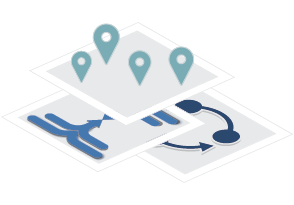Other jurisdictions have chosen to support foster
family recruitment, improved utilization of foster homes, and
reduced distance between children in foster care and placement
location.
In New Hampshire, PAP results are now actively
used to align foster resources and caseworkers to existing homes
and to re-evaluate how families are recruited and maintained in
the foster system.
For Washington state, the PAP methodology was
used to provide a group of child placement agencies with a
data-driven framework to improve foster family recruitment.
Implementation incented a culture shift; agencies are now learning
how to use data to improve services, ensuring families and
children are appropriately identified, matched, and
well-supported.
Through a market-wide collaboration between agencies and the
state, stakeholders are learning more about service gaps, both
geographically and demographically, and are positioning the field
to respond aptly.
In Oregon, PAP partnered with the Department of
Human Services (DHS) to minimize child maltreatment-related
fatalities throughout the state as well as improve outcomes for
foster children.
PAP collaborated with DHS researchers to develop urban and rural
geospatial models and trained staff on the inner workings of
geospatial analysis associated with location and neighborhood
effects.
DHS gained valuable insights, technical expertise, and an
innovative approach to improve outcomes for foster children with
which they are supporting system change.
